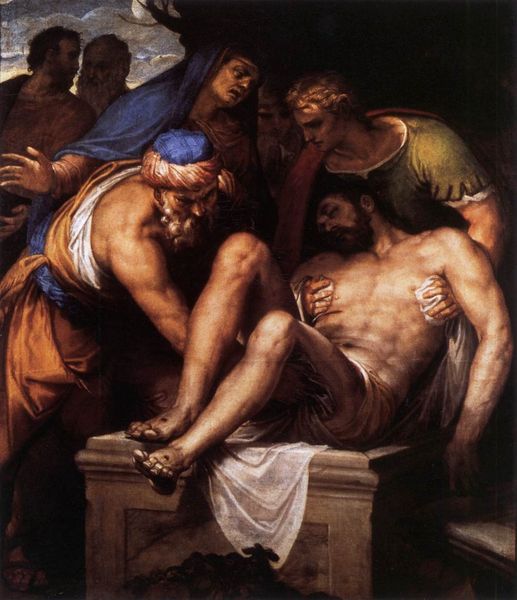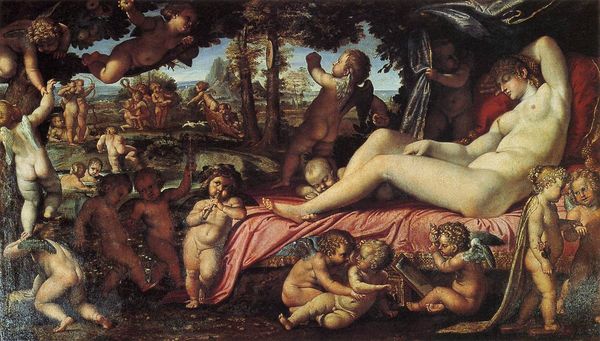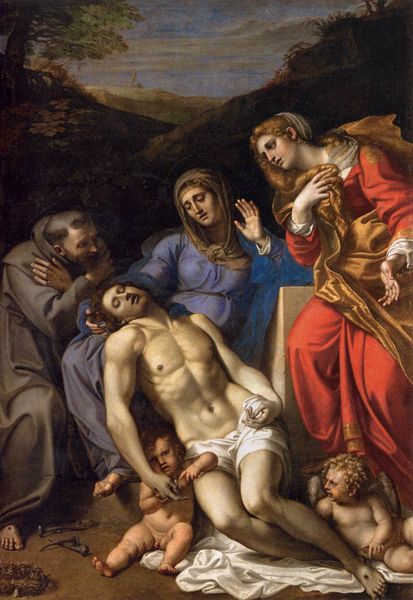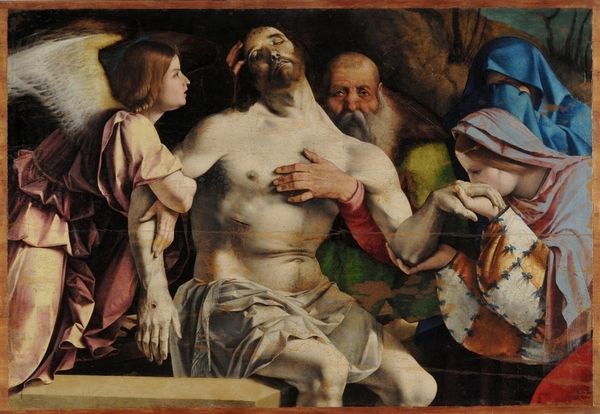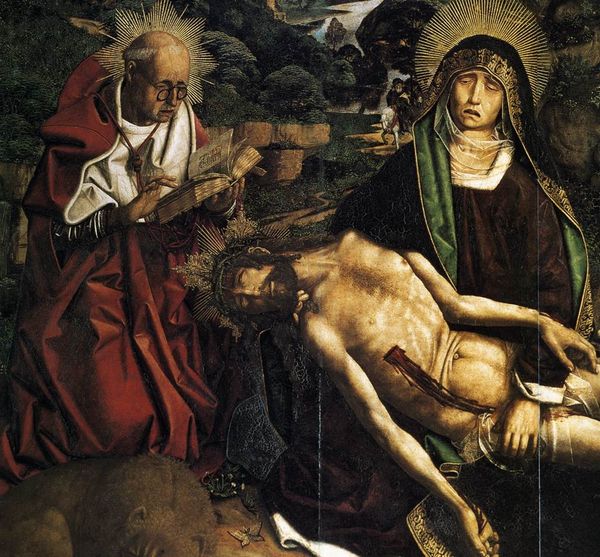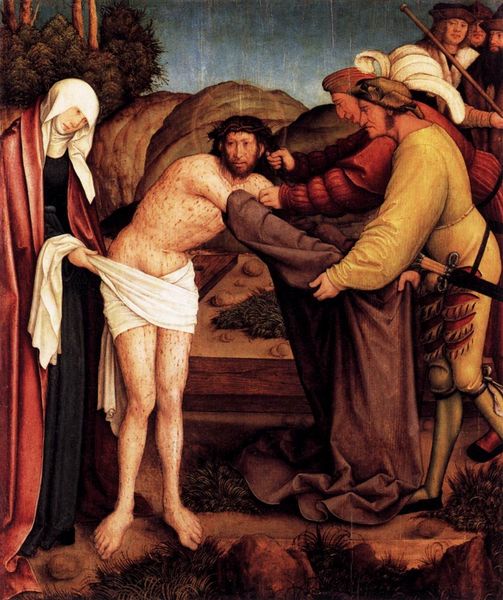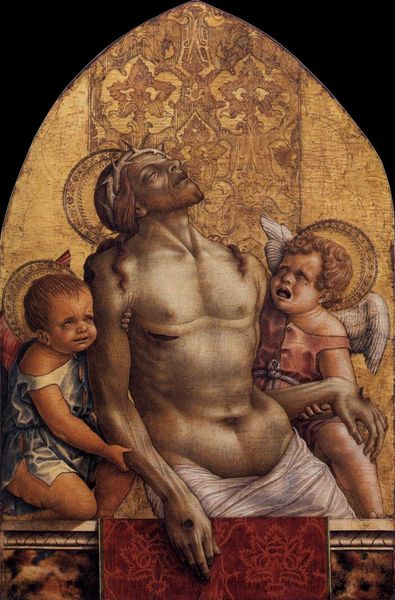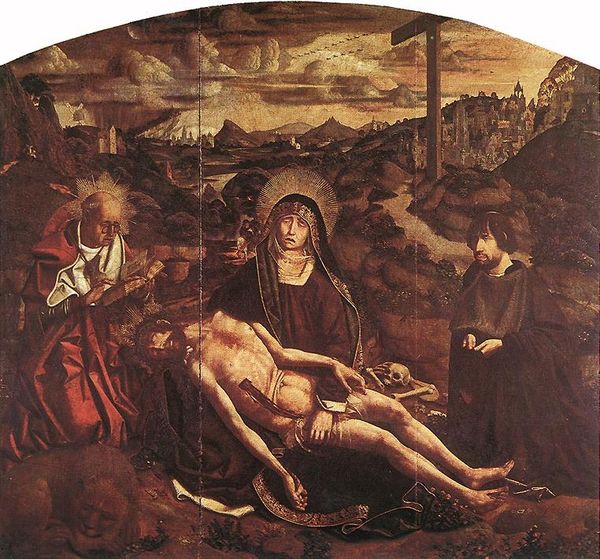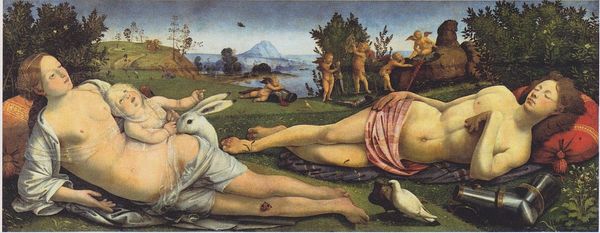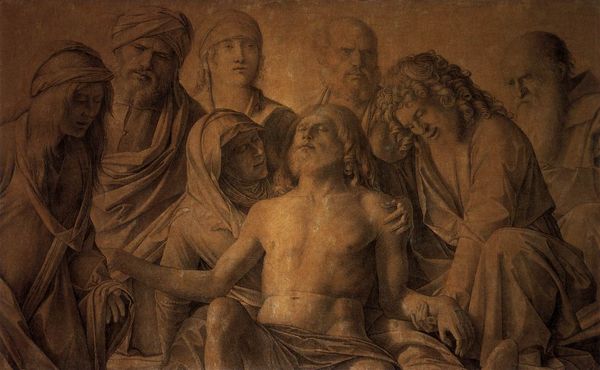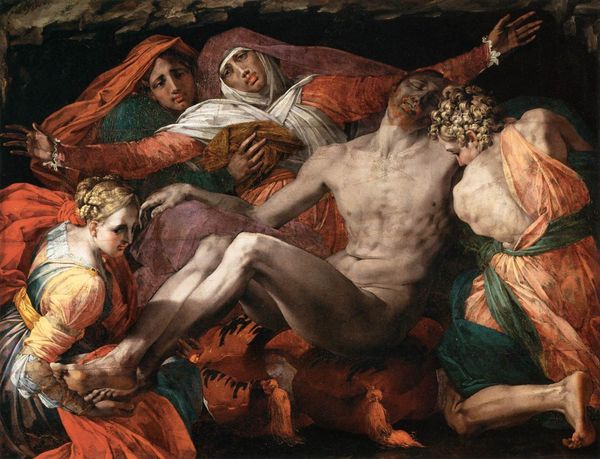
Drunkenness of Noah 1515
0:00
0:00
giovannibellini
Musée des Beaux-Arts et d'archéologie de Besançon, Besançon, France
painting, oil-paint
#
venetian-painting
#
narrative-art
#
painting
#
oil-paint
#
figuration
#
oil painting
#
group-portraits
#
christianity
#
mythology
#
human
#
painting painterly
#
history-painting
#
italian-renaissance
#
nude
Dimensions: 103 x 157 cm
Copyright: Public domain
Editor: Here we have Giovanni Bellini's "Drunkenness of Noah," painted around 1515. It's rendered in oil, and I find the figures to be almost theatrically positioned. How do you interpret the choices Bellini made in portraying this particular scene from the Bible? Curator: Bellini, even late in his career, remained deeply attuned to the shifts in artistic and social sensibilities. The choice of this rather unusual subject from Genesis reveals something about the commissioning context and perhaps Bellini's own reflections on morality and authority. The nudity, especially, is striking given the public nature of much religious art at the time. Why depict Noah in such a vulnerable, compromising state? Editor: It feels almost critical of a biblical figure, doesn’t it? Like showing the flaws of a leader. Curator: Exactly. And in Renaissance Venice, where civic identity and religious piety were carefully intertwined, the display of such a scene served, arguably, less as simple religious instruction, and more as a prompt for communal reflection on ethical leadership. Whose responsibility is it to care for our leaders when they falter? To what extent should human weakness be publicised, if at all? Think about the public figures in Venice at that time, doges and patricians... How does the narrative then engage with those social structures? Editor: That's fascinating! So, it's less about the literal biblical story and more about the contemporary political and social landscape? Curator: Precisely. Consider also the power of the museum space. Putting the painting here raises the profile of these questions even today. The politics of imagery are, in a way, timeless. What we choose to represent, and how, always has some relation to power, even now. Editor: I never thought about it that way. I'm left pondering the role of art in prompting conversations about leadership and moral responsibility within our society. Thanks for that enlightening view. Curator: It’s a pleasure. Art provides a wonderful lens through which we can analyse social, cultural and historical institutions.
Comments
No comments
Be the first to comment and join the conversation on the ultimate creative platform.

